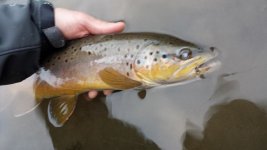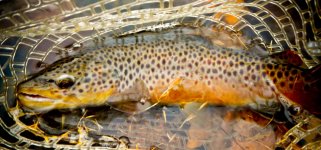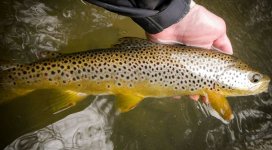mt_flyfisher
Well-known member
Kudos on the photos, and the fish, Heberly.
Not being much of a photographer myself, I do have a couple questions. First, are these pictures of the same fish? They look markedly different to me. Perhaps it's just my old eyes.
And, do you think that trout might be a runner (i.e. a fish that migrated from a larger river downstream to spawn)? In my 50 years of fishing Penns Creek, and in the same section of the stream as you, I have never seen a brown that looked like yours in the top picture.
As an aside, when I first began fishing Penns, I heard stories of nearly 30" Browns (which in reality were likely not really that large, but nice fish nonetheless) being caught in that section of the stream. That was back in the days when fishermen could still ride the train to get in and out of there.
John
Not being much of a photographer myself, I do have a couple questions. First, are these pictures of the same fish? They look markedly different to me. Perhaps it's just my old eyes.
And, do you think that trout might be a runner (i.e. a fish that migrated from a larger river downstream to spawn)? In my 50 years of fishing Penns Creek, and in the same section of the stream as you, I have never seen a brown that looked like yours in the top picture.
As an aside, when I first began fishing Penns, I heard stories of nearly 30" Browns (which in reality were likely not really that large, but nice fish nonetheless) being caught in that section of the stream. That was back in the days when fishermen could still ride the train to get in and out of there.
John







